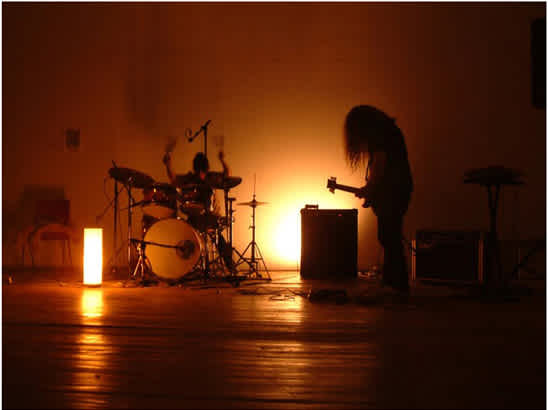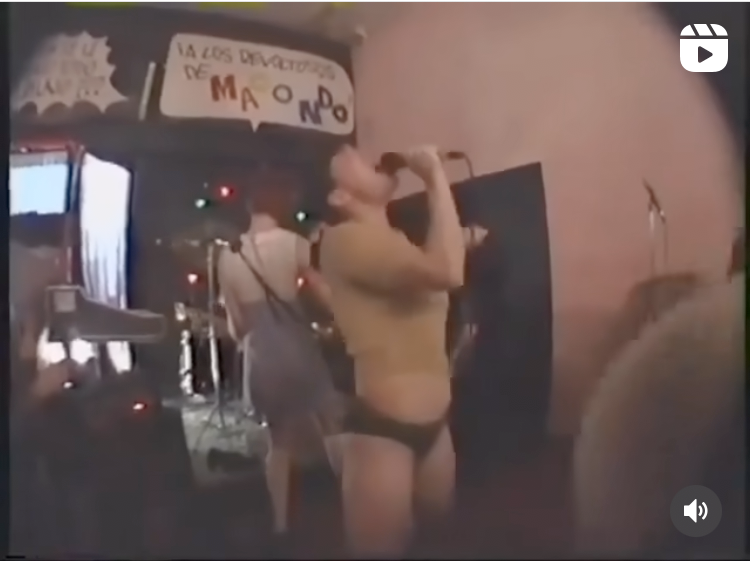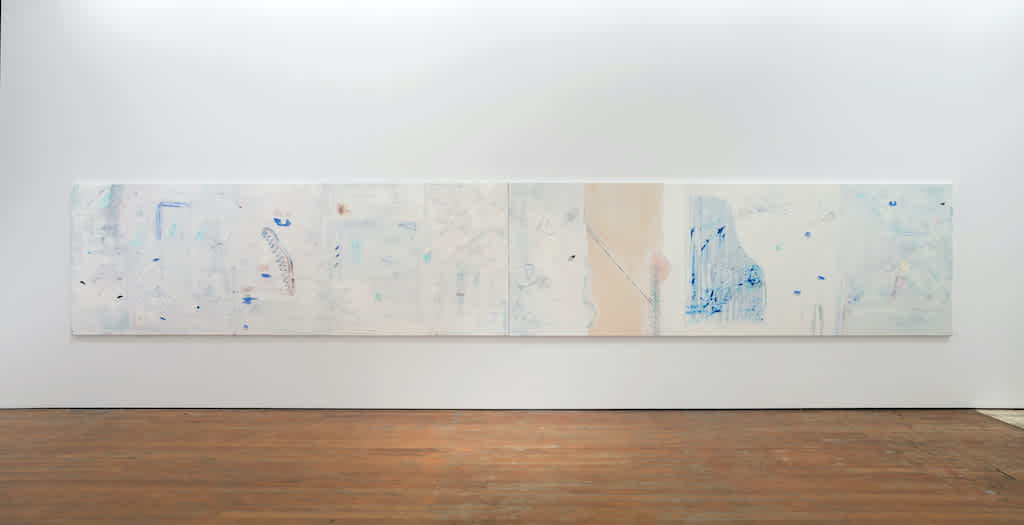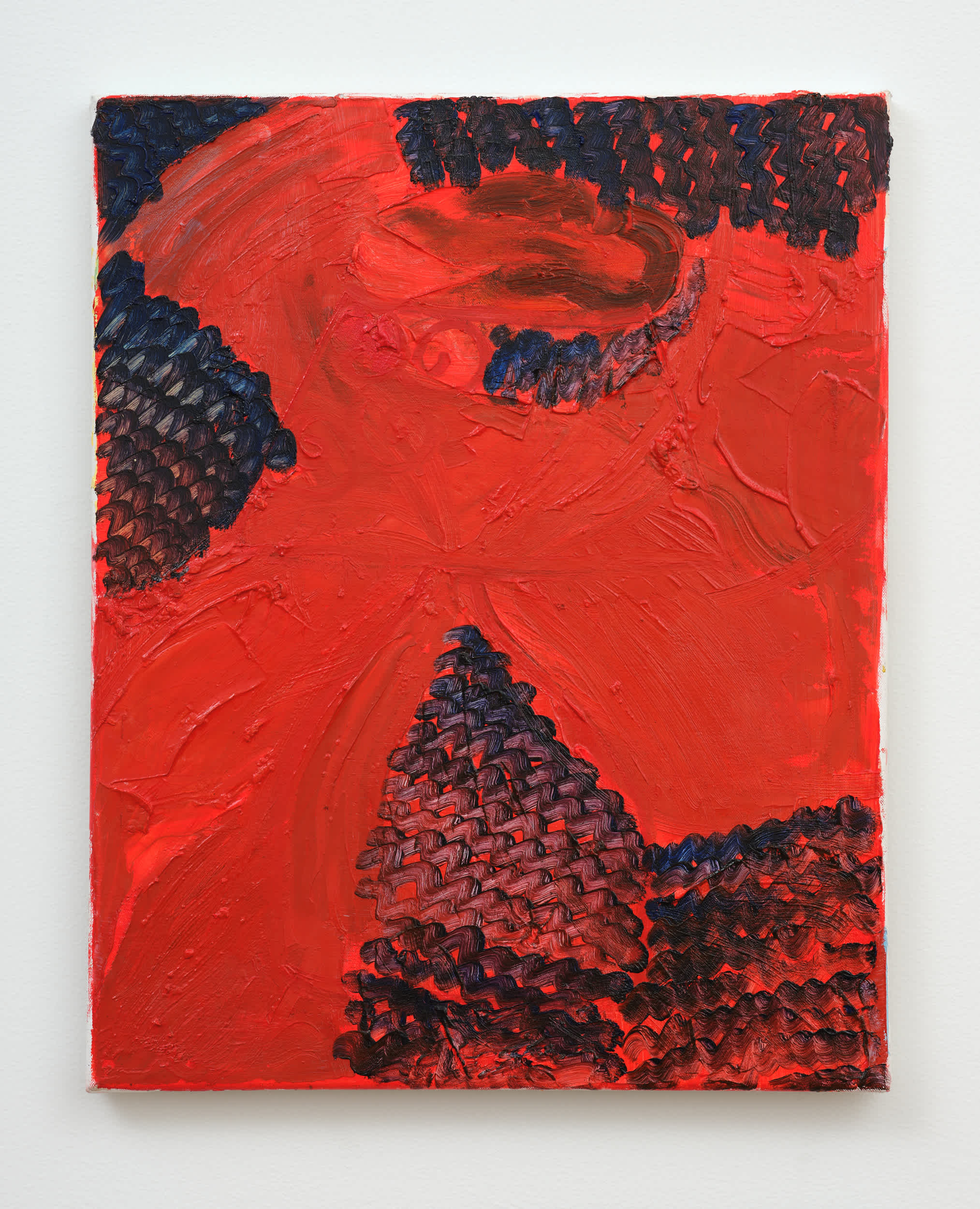Questions for
Stella Corkery

Pictured: White Saucer performance, High St Project, Ōtautahi Christchurch, 2009
Photograph by Shannon of Dungeon Taxis
Tell us about yourself right at this moment: geographically, musically, artistically, personally…?
I live and work in Te uru o Tāmaki Makaurau, Aotearoa. I’m a musician and I have been playing since I began piano lessons at around 8 or 9 years. I continue to play synthesiser and other vintage keyboards mainly for recording purposes. Since the 1980s, my primary instrument has been the drum kit. As time has passed, and being inspired by free jazz and folk music, I have added more percussion elements. Drumming for me began as the role of the rhythm keeper in a band, albeit somewhat idiosyncratically. When I discovered drumming could be ‘beat-less’ there was no turning back and my drumming practice became pretty much solid improvisation. My musical practice is arm-in-arm with my visual work; they each swap methods and concepts across, through, and around each other. Throughout the ‘90s and the 2000s I would have called my drumming free noise or free drumming. Nowadays, my playing has become increasingly self aware—for example a little less noise and more touch, developing a heightened awareness of the haptic potentials of the instrument. This has developed through my painting methods. Right now, my work is undergoing a transition while I study for my PhD at Toi Rauwhārangi Massey University, and that’s looking at what these two practices do for each other, the physics of sound and the physics of paint.
How did you come to drumming?
I chose to drum because the kit looked so intriguing. There were so many parts/pieces and you can keep adding or taking away… as a multi-faceted object it is curiously alluring. I liked that the player position of a drummer in a band was traditionally behind the other band members. I felt like there was more opportunity for mucking around—somehow the rules didn’t seem so set and I enjoyed listening to what others were playing on guitars. I was sort of separate to them and yet part when I needed to be.
You’ve written of some of your early bands sharing a “common desire to throw a tantrum with sound”. Can you give us a picture of these musical experiences?
Literally:

Pictured: Bikini Kill performing Don’t Need You at Macondo in Los Angeles, 1993
Photograph by @mstobivail (screen capture)
It took me a while to be able to “throw a tantrum with sound”! I didn’t know what I was doing for a few years. I think sound tantrums are a political action. Noise music at the time I started playing was a resistance to the capitalisation of music as well as being a load of ‘off the script’ fun.
At the same time, I had an involvement with the punk/post punk scene of Riot Grrl (NZ style), releasing records and playing drums in Fake Purr. Usually we played pretty fast and often shouty. Riot Grrl in my opinion was about having bodily agency, for every-body. My two bands White Saucer and Fake Purr were operating at the same time and would have similar followings but also not so. Maybe Riot Grrl was seen as a little exclusive, but I experienced this movement as inclusive. There would be the issue of technical skills debated, pointed out as a heckle or ‘well-meaning’ advice. I remember we didn’t really care and there were a lot of raucous, fun gigs at one of the bars bands played at the time. Fake Purr played at The Kings Arms, White Saucer at The Cave.
Could you talk about White Saucer and some of the musical/non-musical influences on your practice?
White Saucer came about while living for a few years in the basement floor space of the Parisian Ties & Belts Factory at the back of Karangahape Road, Tāmaki. The area contained a practice space and a plentitude of other areas for creative pursuits. We began as Hot Buttered Soul with our friend Roddy. That band dissolved as bands can do, leaving Alan and I as a duo around 1995. We had songs in Hot Buttered Soul we named by genre, like ‘the surf song’, ‘the psychedelic song’, ‘the free song’ etc. When we became two, we decided we would only play ‘the free song’, which was set up as a spontaneous improvised piece containing noisy parts. Prior to White Saucer forming, we were already aware of improvisation through listening to many kinds of music over the years: artists like Albert Ayler, Neu!, and The Velvet Underground. I imagine I was not the first noise musician to think this but I began by wanting only to play the crescendo that often ends a song as the entire song.

Pictured: Milford Graves and Don Pullan, NOMMO
Design / cover photography by Dawoud Bey
I was caught by the cover of the Milford Graves LP NOMMO, where Milford was photographed playing his snare with a tree branch or a root. I was like: WOW ok I can do anything I want now. As White Saucer played, we discovered the Bill Orcott and Adris Hoyos duo Harry Pussy, they were crazy wild much wilder than us. But we felt we were along a similar track and it felt good. There are many bands that I have learnt so much from but to name just two—which may seem obvious now —we were both big fans of Royal Trux and the Boredoms. When the Boredoms drummer Yoshimi put out a solo 7” that was revelatory for me and I followed quickly with the release of a percussion-only lathe cut 7” in 1994. This was the first release of the private press record labels Alan and I would run and still operate in a low-key way today :)
In brief:
Sun Ra Sun Araw
Free Jazz Free Kitten
The Velvet Underground The Weather Underground
The Dead C Vitamin C
Non-musical influences would be cinema, say, for example, any Kenneth Anger, Todd Haynes or Antonioni’s Zabriski Point, 1970s oddities of horror and science fiction. Contemporary films like Midsommar and Spring Breakers too. Right now, I am remembering some odd 1970s films like Keep My Grave Open (1977, directed by S. F. Brownrigg). The slow pace, disjointed scenes and bleary lighting… with hindsight these films seem like a precursor to the Hypnagogic music of the ‘00s. Lately I have been reading mostly academic journals and texts on sound and painting—last year I loved the catalogue from the Fondazione Prada exhibition Stop Painting, curated by Peter Fischli.

Pictured: Annea Lockwood, Piano Garden, Ingatestone, Essex, UK, 1969-70
Photograph by Chris Ware
How do feminist ideas play a part in your creative practice?
Feminism means different things to every person. For myself, feminism came into my life early on and it’s wholly due to my background. My folks were almost eco-terrorists but were also devout Catholics. There were a lot of contradictory elements going on and so feminism came upon me naturally as a way to unbind myself from various expectations. Therefore, as part of the make-up of my person, feminism carried through into my art practice. For me, it’s the connections between the generational falls of feminism and the so-called critical Deaths of Painting that have been of interest. The Deaths of Painting left the door open for me-the-feminist to enter and engage with ideas around reconstruction. Previously too, the Swiss artist Mai-Thu Perret played an influential role in exhibitions I have had like Sparks in 2016 and Paradises in 2020 (both exhibitions at Michael Lett). I was interested in Perret’s way of integrating subject matter from the group of female revolutionaries she developed within her narrative The Crystal Frontier.
What brought you to painting?
To give some background to why that would even happen I would look to my father Pat. Apart from being a farmer by day and boat builder by night, he sang and was a hobbyist painter and sketched with colouring pencils. He was a big multi-tasker and excellent at many things. This was influential to me in that it showed a way to live a life that occupied more than one practice or profession, and so I guess it’s in the DNA.
When I lived in Ōtepoti Dunedin in the 1980s, many friends had concurrent painting and musical practices, so that continued to feel like the norm for me and I was able to slide right into the Otago way of life. Painting has always been there in some form. A little later than most, I eventually attended art school at the Te Waka Tūhura Elam School of Fine Arts (Waipapa Taumata Rau University of Auckland) beginning in 2009 and lasting the full five years to gain an MFA in 2013. In that first year there was a programme presented by the artist and lecturer James Cousins, centring on Richard Serra’s sculptural verb list. We (the students) were tasked to reinterpret this list in a painterly way. Importantly, this led me towards an understanding of paint and the abstract process, which I continue to draw from. Even as I’ve dipped back into pre-degree drawing and illustration occasionally post my MFA, my painting practice is strongly connected to verb action and abstraction. This is aligned with sound.
As I mentioned, I could find an entry point to a painting practice through the gap left by the critical Deaths of Painting, a practice seemingly critically discarded when I started art school. After some research with sculptural materials and expanded painting when I reached my fourth year (Honours), I settled on painting.

Pictured: Stella Corkery, Theme for a Science Fiction Vampire: breath on breathing 2017 (spray paint, oil paint, oil pastel, tea, varnish and collage elements on canvas, 1300 x 7500mm)
Courtesy of the artist and Michael Lett, photograph by Alex North
What draws you to musical improvisation and what role do improvisational methodologies play in your painting practice? Is there a connection between the physicality of your musical performance and that of making a painting?
Improvisation has an attraction perhaps because of the risk involved or, in a similar way to painting, it presents a set of problems needing to be solved in real time. It is a temporal unfolding. As a drummer I’m putting sounds together using all four limbs. There’s something physically unusual and pleasing about this particular operation of the mind and body. It may not always work or you may get stuck within your limitations but with a drum kit there’s always an object available to carry you through sticky moments, or you can try silence. There is a vulnerability exposed in live performance and it’s also there when presenting an artwork for viewing; there’s a kind of humanity to that. As a player, you are operating with a heightened awareness of the senses—you have to pay close attention to what’s going on with the surfaces of your instrument with touch and by listening.
Towards the end of my university studies my decision was to take on the more traditional field of painting. This was in part due to the limitations of this practice: these limitations made working within the painting framework more interesting. This is similar to working within the framework of a particular instrument.
When I painted, I discovered it was quite difficult to repeat myself. I realised I was improvising from painting to painting. Starting each painting anew, with just a few preconceived ideas—perhaps just a couple of colours to work with—moving forward with the process of making unfolded as the painted marks developed. The act of researching what a painting could be was my preoccupation. The language of sound and paint are a bridge to one another, with meaning easily transitioning between the two mediums.
I enjoy the physical mind and body actions both pursuits offer. With/in the painting Theme for a Science Fiction Vampire: breath on breathing from 2017 I treated this work as a developing musical score, using the language of sounds as both subject matter and verbs, for example the sound wave or scraping, fluttering or finger tapping.


Pictured: Stella Corkery, Theme for a Science Fiction Vampire: breath on breathing 2017 (detail) (spray paint, oil paint, oil pastel, tea, varnish and collage elements on canvas, 1300 x 7500mm) Courtesy of the artist and Michael Lett, photographs by Alan Holt
What gives you hope?
Seeing other artists' paintings, either locally or from abroad, those who I share a kind of conceptual and material language with, and seeing more work from artists previously underrepresented or misrepresented by art/history.

Pictured: Stella Corkery, In a Gown, oil on canvas, 2021
Courtesy of the artist and Michael Lett, photograph by Sam Hartnett
Born in Tuatapere, Stella Corkery lives and works in Tāmaki Makaurau, Aotearoa. Stella’s work considers a critical history of painting together with ideas surrounding feminism. References within her paintings can touch on art history, contemporary art, popular culture as well as musical influences such as post-punk and experimental improvised sound.
